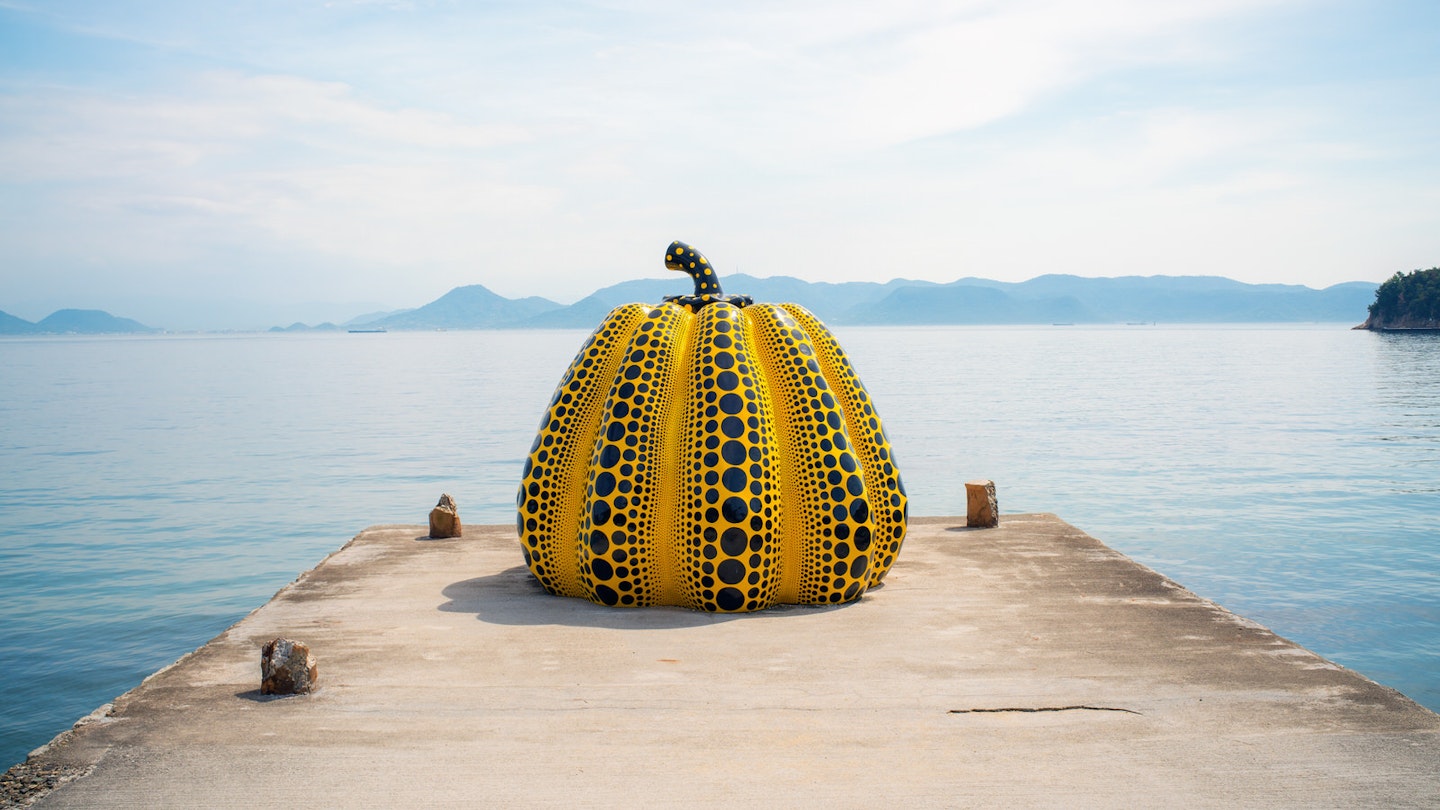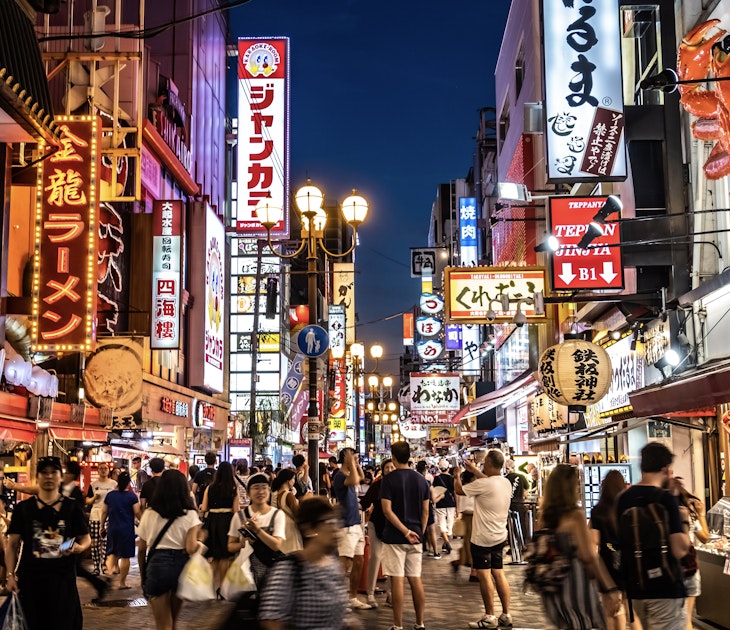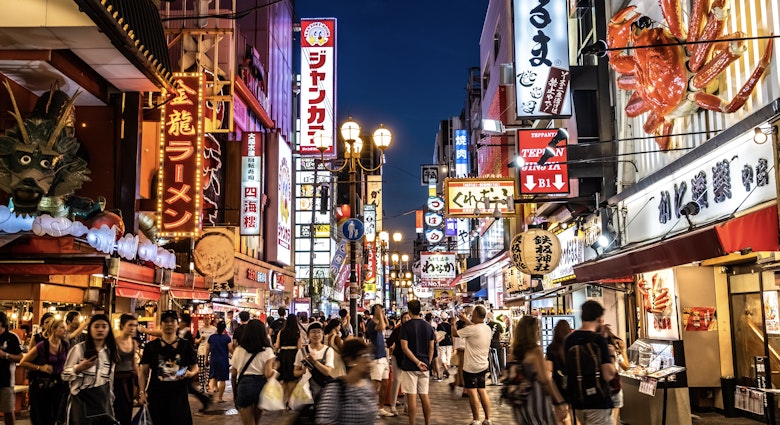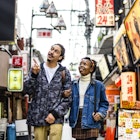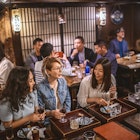In Japan, there’s a drive to create and experience things that are bigger, better, faster and stronger than anywhere else in the world. Shibuya Crossing in Tokyo is one of the world's busiest pedestrian crossings; the Shinkansen bullet train is the second-fastest train in the world at 320km per hour, and is set to get even faster; and the biggest Starbucks in the world can be found in Tokyo's Meguro district.
While this fast-paced sensory overload may not appeal to everyone, Japan's go-hard approach to entertainment and infrastructure also applies to relaxation and silence. If you're visiting Japan and want to experience the thrills while also finding space to breathe, you can strike that balance perfectly, because when they do quiet, they do it better than anywhere else in the world.

Wander Tokyo’s streets at night
Tokyo is famous for certain pockets of mayhem but it also excels in the calm. It’s easy to get caught up in the rush but if you stay in the quieter areas of the city, like Shinjuku’s City Hotel N.U.T.S., you have the option of dipping in and out of the madness. From Shinjuku it’s easy to walk to popular destinations like Shibuya and Harajuku, avoiding busy train stations as you go. Night-time strolls are fruitful because you can avoid the rush of people getting to and from work and fully appreciate the neon landscape that this city projects into the dark.
Visit tourist destinations at off-peak times
As a tourist in Tokyo, you have the privilege of doing Saturday activities on a Monday night. Golden Gai is a famous intersection of alleyways lined with over 200 ramshackle bars that can seat eight customers at the very most. Visiting on a weekday evening instead of a busy weekend night, I could meander through these crooked streets and take in the personality of every bar. In the Nonbei Yokocho district of Shibuya, there’s a similar set-up in the wonderfully nicknamed Drunkard’s Alley. A lot quieter than Golden Gai, Nonbei Yokocho is home to the intimate Bar Piano (1-25-10 Shibuya, Shibuya-ku). It's decorated with antique chandeliers, crushed red velvet and regal paintings; the bar itself is a freestanding piano and a maximum of three people fit on the ground floor. If you’re popping in for one drink or just poking your head in out of curiosity, these bars are like a portal into a fantasy land and once that door closes behind you, it feels like the rest of the world is on pause.

Embrace the wonder of the Ghibli Museum
Once you step inside Ghibli Museum, located on the outskirts of Inokashira Park in west Tokyo, you’re in the care of Studio Ghibli animator Miyazaki Hayao's creations Totoro, Yubaba and San. With each room presenting a different treat – old films reels projecting animation onto the walls, a reconstructed artist’s workroom or an old-fashioned picture house – there’s a childlike wonderment at handing your imagination over to an animation studio for a couple of hours. Visitors from outside Japan can only purchase tickets from the Ghibli Museum website on the 10th of each month (at 10am Japan time) to visit the following month. The demand is high to visit the museum website at this time so you’ll have to refresh the page a few times before making your purchase. Thankfully, this exclusive approach to selling tickets means that the museum is never overrun, and if you visit closer to the second half of your allotted time, you’ll skip the immediate rush of Ghibli fans.
Take the time to browse
Shimo-Kitazawa is a polite version of London’s Camden High Street. Dotted with boutiques, cafes, tiny bars and curry houses, it’s a browser’s dream. Music lovers should set some time aside to visit Jet Set Records, a vinyl store that specialises in electronic music but has a section dedicated to every genre under the sun. There’s something quite therapeutic about flipping through the store's collection of thousands of records.
Coffee culture is a serious business in Tokyo and by stumbling upon RBL Café, you’ll learn that silence is a serious business too. Designed for small groups or solo visitors, this book cafe is fitted with plenty of plug sockets and allows you to hide away from the world, either to peruse the bookshelves or work as you sample some of their finest blends.

Always look up
To accommodate its massive population and constant turnover of tourists, Japan builds upwards and some of the most interesting things can happen between the fourth and 47th floors. In Osaka, giant prawns, inflated blowfish, mega burgers and gigantic gyozas fill the skyline of the food district Dotombori, leading you in the direction of a satisfying meal. But you’ll also find secluded bars up above in old apartment blocks: Kinguu Bar is an antidote to Osaka’s hectic karaoke-fuelled nightlife. With a playlist that shuffles from Doris Day to a metal version of Mozart, the Victorian goth bar specialises in the juxtaposition of the macabre and the quaint, and is a soundproofed escape from the streets below.
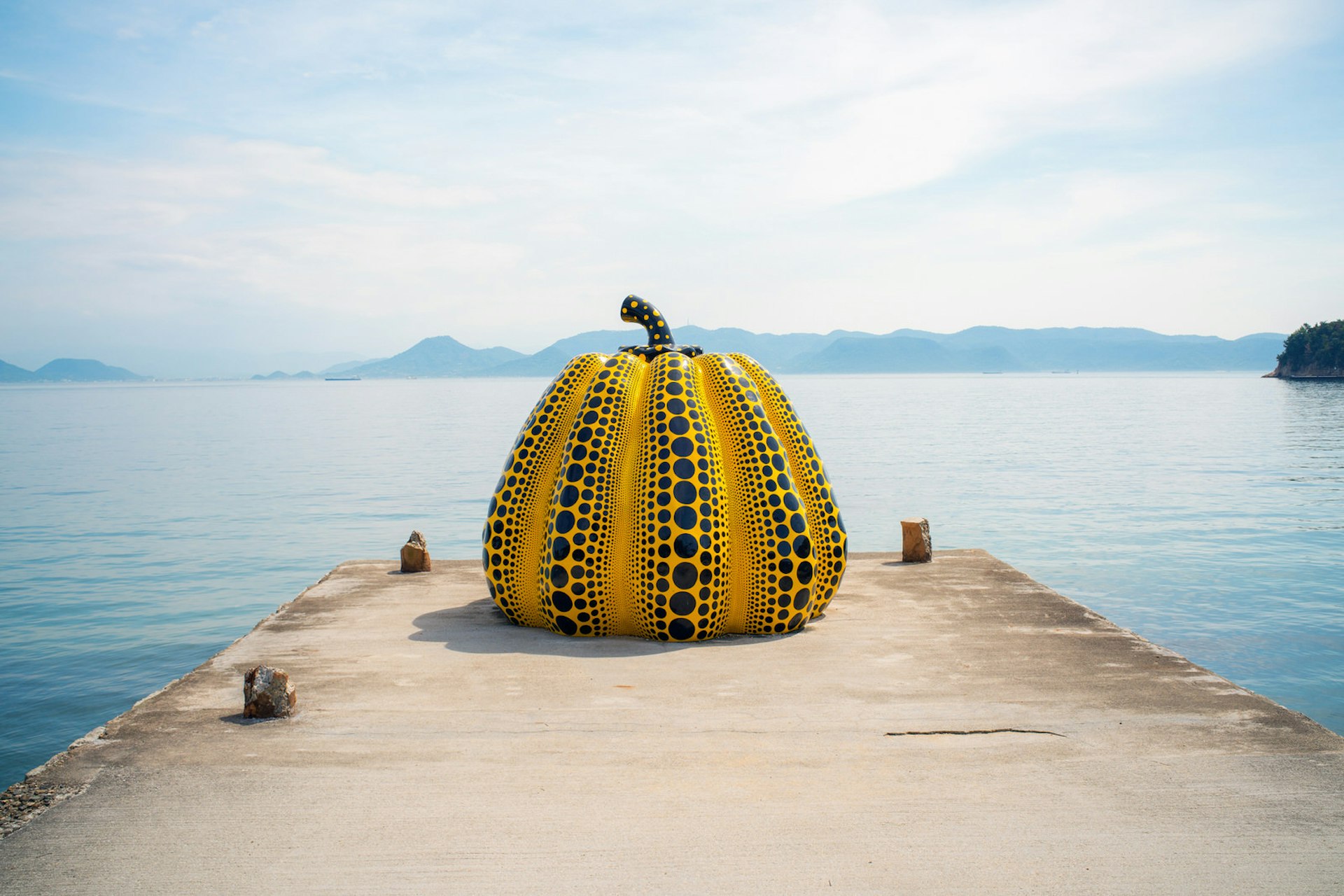
Escape the city
If serene islands are your bag then Naoshima should top your travel wish-list. It's a trek from Tokyo – you have to get the Shinkansen (bullet train), then a bus, then a ferry – but any travel-related stress will dissipate as soon as you arrive on this tiny island in Japan's Seto Inland Sea. With bicycles being the main mode of transport and nightlife winding down between 10pm and midnight, there’s a different pace of life in this place. Surrounded by skyscraping pine trees, secluded beaches and the constant sound of water lapping at the shore, your senses will be awakened here.
Appreciate art in silence
Naoshima's Chichu Art Museum implements a no-camera and no-speaking rule, which enhances the larger-than-life artwork by Claude Monet, James Turrell and Walter De Maria that fills the blanched walls. The underground museum space itself is an impressive architectural feat by Tadao Ando. A short stroll downhill from Chichu is Benesse House Museum. The walkway to the gallery takes in cliffs, beaches and sky, then once inside, you can chat softly and enjoy a gentle approach to ingesting art.
Recharge in a ryokan and rest up in a bathhouse
Staying in a ryokan, a traditional Japanese guest house, is one of the most relaxing things you can do in Japan. Leave your shoes at the front door and retreat to your private room, kitted out with a low-level table and sliding wooden doors. The room's design encourages calm, which should lull you into a deep sleep; ryokan options on the mainland include Uno Port Inn. The only hotel option on Naoshima itself is Benesse House, a boutique hotel that is beautifully designed and doubles as an exhibition space for the Benesse collection.
Before boarding the ferry back to the mainland, schedule a trip to Naoshima Bath "I Love YU", the island's art deco bathhouse. The warm baths and low hum of conversation will leave your body feeling refreshed and soothed.
Indulge in some five-star luxury
After my whirlwind visit to Japan, the calm of Naoshima was the ultimate wind-down. Knowing that reality would hit me like a brick at the check-in gates at Tokyo's Haneda Airport, I spent my final night in the luxurious Park Hyatt, where 2003 movie Lost in Translation was set. I wrapped up the evening by taking a late-night swim in the empty pool, and as I sat having breakfast with Mount Fuji keeping an eye on me in the distance, I had the grand send-off needed for such a serene trip.
https://shop.lonelyplanet.com/products/japan-travel-guide-15
